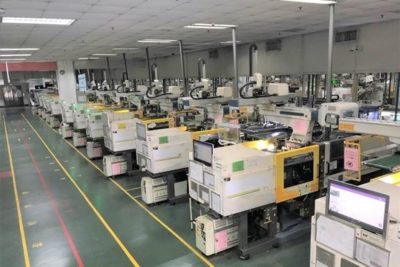Foxconn Interconnect Technology is poised to deliver some yuletide cheer when it comes to holiday gifts.
That’s because FIT is rolling out AI-powered inspection systems in its factory lines. FIT has begun deploying AI for automated high-precision inspection of components and tools in its manufacturing operations.
The move could bolster production throughput and improve the quality of devices ahead of the year’s peak sales season.
Foxconn Interconnect Technology parent Foxconn manufacturers 40 percent of consumer electronics worldwide.
Industry Profits Squeezed
Tight gross profit margins and stiff competition of mass-produced electronics have pressed Taiwanese manufacturers to seek new ways to stay ahead.
More than half of executives at large manufacturers surveyed by Capgemini said they have invested $100 million or more on smart factories over the past 5 years. Smart factories can nearly double the profit margin of the average automotive manufacturer, estimates the consulting firm.
AI Juices Inspection
FIT is leading the way. It recently deployed its AI-powered inspection system for its injection molding manufacturing lines. The company plans to expand the effort to 30 percent of its production lines by 2019.
The manufacturing giant aims to address a shortage of trained inspectors with this technology, aiming to eventually free up these expert technicians for more valuable quality assurance positions.
Foxconn Chairman Terry Guo has said publicly that the AI program represents the company’s opportunity to “transform from traditional manufacturing.” The efforts are positioned to reduce costs, create efficiency and deliver improved results for its customers.
GPU-Powered Manufacturing
FIT has trained convolutional neural networks to identify defects in 10 different categories of components. The company’s data scientists initially fed its neural nets 600 images for each defect. The networks continue to learn from images captured by industrial cameras, continuously improving the system as more data becomes available.
NVIDIA HGX and DGX systems helped handle FIT’s massive data requirements — hundreds of terabytes — for training its AI inspection models in the company’s private cloud. FIT has also installed our DGX Station on site for ongoing training and inference as well as the Jetson TX2 module to widen its inspection coverage reach at lower price points.
“Through NVIDIA’s outstanding computational capabilities, FIT’s AI inspection capability was able to reach more than 95 percent accuracy, approaching the level of quality and efficiency of professional human inspection,” said Joseph Wang, chief technology officer of FIT.
GPUs Inspect CPU Sockets
 FIT’s CPU socket injection molding machines (pictured left) are fitted with five cameras to spot 1 millimeter defects among the millions of flawless components per day produced by its precision manufacturing processes.
FIT’s CPU socket injection molding machines (pictured left) are fitted with five cameras to spot 1 millimeter defects among the millions of flawless components per day produced by its precision manufacturing processes.
Tracking these imperfections during the manufacturing process is a massive undertaking, the company said. This application of deep learning wasn’t possible with CPUs, and instead required GPU acceleration.
FIT has ambitious goals for its AI. Avoiding the shipment of defective components is just the start. It eventually plans to use the technology in its manufacturing process to maximize yield quality, boosting the finished production output.
“We are aiming for fewer returns. Quality is the main goal — this is the first step of a much wider plan,” said Wang.